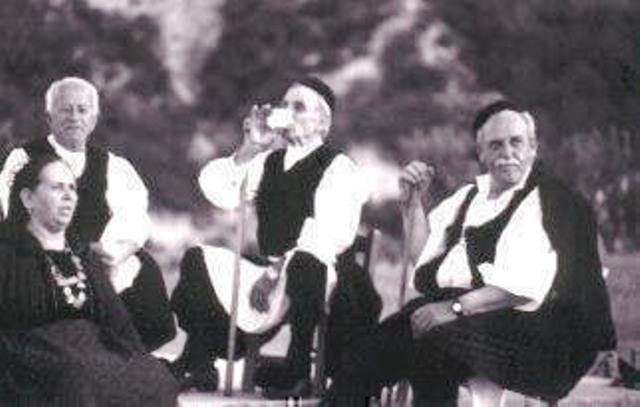|
Christmas
customs
The celebration of Christ’s birth. In the first Christian centuries it
wasn’t celebrated separately. It was celebrated on Epiphany. It was
established to be celebrated separately on the 25th of December
in the 5th century. Many of the customs of this celebration are
pre-Christian. From “Saturnalia” (a Roman celebration) a custom of
killing a pig remained. It was called “chirosfagia”. From the same
Roman celebration the customs of burning candles and exchanging gifts
remained as well. The Christmas tree is a relatively new custom and is
considered to be a Celtic remain. The Saxons were the first who used ivy.
Carols were spread and became even more important after the 13th
century.
Carols
in our village
The
owners of the houses open their doors and listen to the message. They
welcome the children by offering them candies, cookies and money.
New
Year’s day in Karitsa
Babaliouria
An ancient custom which comes from the worship of the God Dionysus. It is
kept until today in many areas in Macedonia and especially in villages
such as Karitsa, Livadi Olympou and many others. This custom is related
with the exorcism of evil spirits, which is achieved by the sound of
bells, as we will see later. The New Year’s Day the young people of the
village would wear masks made of sheep leather. These masks were horrible
at sight with the intention of scaring the evil spirits that were around
the village and wanted to harm it. Round their waist on a wide belt they
would hang big bells. Dressed like this they went round the village
shaking their bells in order to cause so much noise that could scare the
evil spirits away. It is also said that boys were dressed as pigs and went
around the village having the same purpose as “babaliouria” had.
Moreover, someone playing bagpipes went around with them and sang songs.
For example at a house that an unmarried daughter was living they sang the
following song
“edo
kori gia pantria, kori gia aravona”
After they had visited every house in the village they went to the central
square and dance with all the other residents. The feast went on until the
morning, in houses of friends and relatives.
New
Year’s customs in other places in Greece
In many other Greek places it is believed that in New Year’s Day someone
should foresee his future or should try by some symbolic actions to change
it. So in many places on New Year’s Day taps are left open meaning that
as the water runs the luck of the person who opened them runs as well. It
is also believed that spreading sand in the house will bring luck too. In
the New Year’s morning all the members of the family wash their faces
with water the housewife gives them in order to wash away last year’s
evil spirits. She also hits them gently with an iron to that has been left
out the previous night. This action symbolizes that people should be as
strong as the iron tool. In many places the moment they wake up they look
at the mountains [if this is possible] hoping that they’ll be as strong
and stable as mountains are the year that follows. Especially if the
mountains are covered with snow this means that New Year will be even more
successful.
Epiphany
in Karitsa
Karitsa as every village is a village with rich religious tradition. Many
of the customs are connected with religious celebrations. Epiphany for
people in Karitsa starts at church. After the liturgy the families of the
village give symbolic amount of money to church and they take part in the
litany that follows carrying an icon. The litany having the priest as a
leader goes to “Potoki” (location of the village). There the priest
throws the Holly Cross in the river. Years before, when the river was full
of water, young people dove in the river to catch the Cross. When they get
back to the village the priest holding the Holly Cross and basil goes to
every house to bless it. At the noon the whole family has lunch together. |
